Books
Books
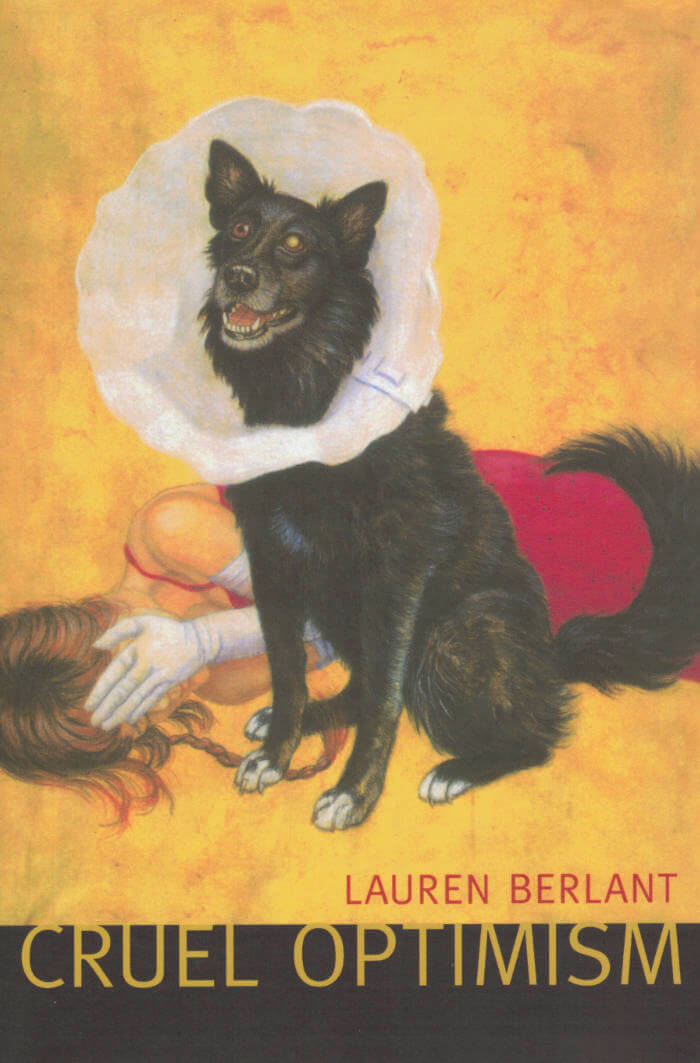
Cruel Optimism
A relation of cruel optimism exists when something you desire is actually an obstacle to your flourishing. Offering bold new ways of conceiving the present, Lauren Berlant describes the cruel optimism that has prevailed since the 1980s, as the social-democratic promise of the postwar period in the United States and Europe has retracted. People have remained attached to unachievable fantasies of the good life—with its promises of upward mobility, job security, political and social equality, and durable intimacy—despite evidence that liberal-capitalist societies can no longer be counted on to provide opportunities for individuals to make their lives “add up to something.”
Arguing that the historical present is perceived affectively before it is understood in any other way, Berlant traces affective and aesthetic responses to the dramas of adjustment that unfold amid talk of precarity, contingency, and crisis. She suggests that our stretched-out present is characterized by new modes of temporality, and she explains why trauma theory—with its focus on reactions to the exceptional event that shatters the ordinary—is not useful for understanding the ways that people adjust over time, once crisis itself has become ordinary. Cruel Optimism is a remarkable affective history of the present.

The Queer Art of Failure
The Queer Art of Failure is about finding alternatives—to conventional understandings of success in a heteronormative, capitalist society; to academic disciplines that confirm what is already known according to approved methods of knowing; and to cultural criticism that claims to break new ground but cleaves to conventional archives.
Jack Halberstam proposes “low theory” as a mode of thinking and writing that operates at many different levels at once. Low theory is derived from eccentric archives. It runs the risk of not being taken seriously. It entails a willingness to fail and to lose one’s way, to pursue difficult questions about complicity, and to find counterintuitive forms of resistance.
Tacking back and forth between high theory and low theory, high culture and low culture, Halberstam looks for the unexpected and subversive in popular culture, avant-garde performance, and queer art. Halberstam pays particular attention to animated children’s films, revealing narratives filled with unexpected encounters between the childish, the transformative, and the queer. Failure sometimes offers more creative, cooperative, and surprising ways of being in the world, even as it forces us to face the dark side of life, love, and libido.

Anemones: A Simone Weil Project
The author’s research on troubadour poetry yields this experiment in thinking ‘near and with’ philosopher and political activist Simone Weil. Moving between the epistolary, poetry, performance and scholarly research, it centres on a new translation of Weil’s 1942 essay ‘What the Occitan Inspiration Consists Of’ that elevates the troubadour concept of love to a practice of political resistance rejecting force in all its forms. Robertson dwells on the transhistorical potential of this concept from the violent context in which it emerged to the troubling conditions of the present. Embracing actualised and suppressed histories, the work testifies to words, friendship and readership as resistance across distances.
With a contribution by Benny Nemer
Design: Rietlanden Women’s Office

Maquillage as Meditation: Carmelo Bene and the Undead
Partly a script, partly a personal voyage into the psyche of diseducation, this book happens, has happened and will happen on the 31st of October in a place called ‘The Palace of Melancholy’. In this temporal and spatial loop, the figure of Italian actor, author, director, philosopher, and public persona Carmelo Bene is summoned to hopefully be dismissed once and for all. Bene is looked at by the author reluctantly and yet resolutely through inner voices of dissent, shame and rebellion. He is imagined in gatherings that didn’t happen and read through an epistemology of contradiction. In Giannini’s company and support, Snejanka Mihaylova, Jacopo Miliani, and Arnisa Zeqo probe the walls of the Palace, looking for an exit.

Social Movement: Through the Lens of Performance and Performativity
This publication documents and shares the trajectory of If I Can’t Dance’s engagement with ‘Social Movement’ as the field of inquiry for its seventh biannual programme (2017–18).
Social Movement: Through the Lens of Performance and Performativityinvestigates how performance ontologies around bodily experience, affect and the relational better one’s understanding of social movement – and in turn how that understanding expands performance vocabularies. Divided into three ‘directions’ of movement, ‘gathering’, ‘embodiment’ and ‘care’, the selected theoretical and artistic perspectives are culled from our Reading Group material and from guests on our Radio Emma broadcasts. A keynote lecture by performance and social practice scholar Shannon Jackson, delivered as part of the edition’s final presentations, serves as an introduction.
Contributors: Giorgio Agamben, Selçuk Balamir, Anne Boyer, Judith Butler, Thomas F. DeFrantz, Nell Donkers, Pascale Gatzen, Édouard Glissant, Ayesha Hameed, Sands Joseph Horwitz-Dijks Murray-Wassink, Shannon Jackson, Rudolf Laban, Gregory Lennon, Audre Lorde, Ros Murray, AnnaMaria Pinaka, Tina Reden, Marjan Sax, Rebecca Schneider, Taka Taka, Simone Weil, Nagaré Willemsen; and postcard insert by Reza Mirabi.

Event and Duration
Event and Duration is a collection of texts that offer various perspectives on the notions of ‘event and duration’, and suggest ways that time can be thought and measured otherwise. The selection of texts are drawn from the field of performance studies, philosophy, psychoanalysis, science fiction and the visual arts among others, all of which were read in If I Can’t Dance’s reading groups in Amsterdam, São Paulo and Toronto as part of the artistic programme VI – Event and Duration (2015–16).
Contributors: Octavia E. Butler, Paul Chan, Denise Ferreira da Silva, Elizabeth Freeman, Amelia Groom, The Invisible Committee, R.D. Laing, Henri Lefebvre, Jota Mombaça, José Esteban Muñoz, Peter Pál Pelbart, Paul B. Preciado; and artist pages by Becket MWN.
176 p, ills colour, 15 x 22 cm, pb, English, 2021

Organic Music Theatre – Festival de jazz de Chateauvallon 1972 (2 vinyl LP)
Don Cherry’s New Researches featuring Naná Vasconcelos.
In the late 1960s, the American trumpet player and free jazz pioneer Don Cherry (1936–1995) and the Swedish visual artist and designer Moki Cherry (1943–2009) began a collaboration that imagined an alternative space for creative music, most succinctly expressed in Moki's aphorism "the stage is home and home is a stage." By 1972, they had given name to a concept that united Don's music, Moki's art, and their family life in rural Tagårp, Sweden into one holistic entity: Organic Music Theatre. Captured here is the historic first Organic Music Theatre performance from the 1972 Festival de jazz de Chateauvallon in the South of France, mastered from tapes recorded during its original live broadcast on public TV. A life-affirming, multicultural patchwork of borrowed tunes suffused with the hallowed aura of Don's extensive global travels, the performance documents the moment he publicly jettisoned his identity as a jazz musician, and represents the start of his communal "mystical" period, later crystallized in recordings such as Organic Music Society, Relativity Suite, Brown Rice, and the soundtrack for Alejandro Jodorowsky's The Holy Mountain.

The Purple Line
The control of images, their authentication as facts, the possibility of making visible portions of reality removed from our gaze through pixelation–a technique in which the image becomes unrecognizable–are the central themes of the artist's research.
The cycle, created by recombining advertising photos alongside images of mutilated bodies, aims to stimulate a cultural and political reflection on the visual imagery of our contemporary world, on what is made public and what is concealed or censored. Hirschhorn overturns the selective logic with which images are normally shown: he pixelates capitalism, the consumerism to which visual culture is constantly subjected, and de-pixelates the most dramatic reality; he makes visible what comes to our eyes without mediation, and invisible or only partially visible what arrives artificial or filtered.
In addition to essays by the curators and international critics, the catalog includes an anthology of Thomas Hirschhorn's writings and an unpublished text. A section of the volume is dedicated to research materials and the sources used by the artist to create his works: paintings by other authors, advertising and reportage images, books, and short texts. The book is also accompanied by a rich iconographic apparatus that documents the installation views, and the images collected in the Catalog Raisonné, a complete documentation of the 122 Pixel-Collage.
Conceived entirely by the artist on the occasion of the homonymous solo exhibition at MAXXI, Rome, this volume documents Thomas Hirschhorn's research on Pixel-Collage, an impressive cycle of works realized between 2015 and 2017.
Edited by Hou Hanru and Luigia Lonardelli.
Texts by Thomas Hirschhorn, Hou Hanru, Luigia Lonardelli, Lisa Lee, Nataša Petrešin Bachelez, Yasmil Raymond, Dirk Snauwaert.
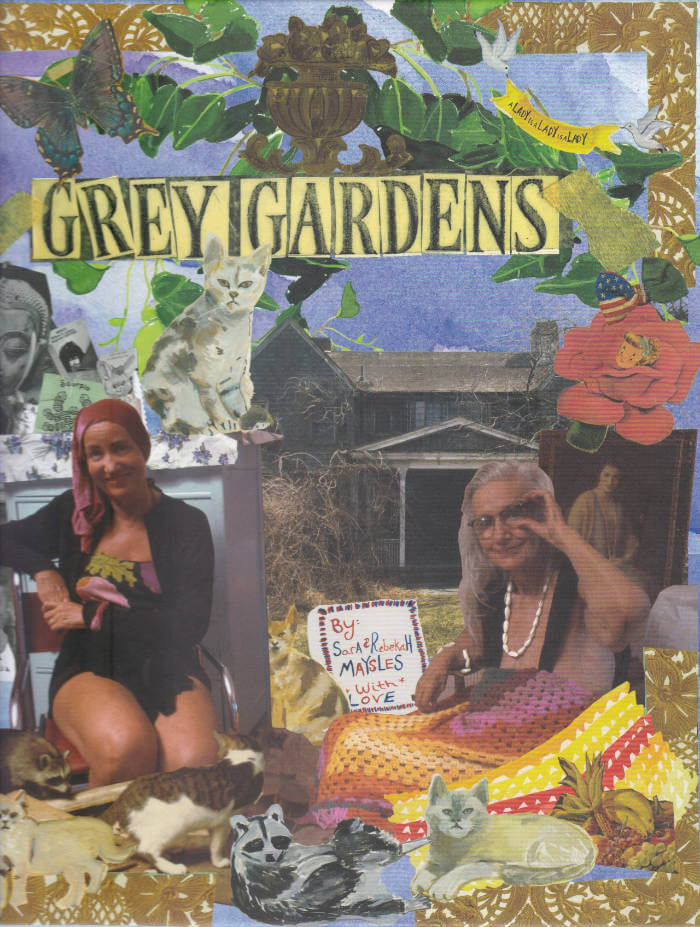
Grey Gardens
One of the strangest and subtlest films ever made, the Maysles Brothers' 1975 documentary Grey Gardens today boasts as devoted a following as Harold and Maude. Shot at Grey Gardens, the dilapidated East Hamptons mansion of Big Edie and Little Edie Beale, aunt and cousin to Jackie Onassis, this classic of cinema vérité tracks the Beales' eccentric and sequestered lives, which consist mostly of doing nothing, but with a mesmerizing zest and volubility.
This volume offers a myriad of illustrations, photographs, film stills, production notes and other archival materials alongside transcripts of the Beales' own stories and conversations edited from unreleased Grey Gardens sound recordings. Structured to mirror the Maysles' approach to the world of the Beales, it resembles the enchanting clutter of the mansion, a self-contained world littered with mementos and ephemera. It also reproduces unpublished photographs by both Albert and David Maysles. With an introduction by Albert Maysles, drawings and illustrations by Albert's daughter, Rebekah Maysles and an appendix with the full transcript of Grey Gardens, as well as an audio CD of sound recordings capturing the Beales at their best, this book is the essential companion to the film and a beautiful testimony to its legacy.
The 60-minute CD that comes with the book contains conversations with the Beales and their friends, songs and poetry recited by the two Edies and audio of the Beales during and after watching the film for the first time.

Disproof Does Not Equal Disbelief
An unconventional invocation of Michael Stevenson's practice over the past 35 years.
From his refuge in upstate New York—the studio/ living complex where he enacted a late pivot back to figuration—the American painter Philip Guston once offered the following outburst to the question of how such a turn could happen.
"What kind of man am I, sitting at home, reading magazines, going into frustrated fury about everything and then going into my studio to adjust a red to a blue?"
Over time, this sparse utterance takes on an architectural form in the imagination, a model that proposes a tantalizing proposition when fleshed out. The painter's words situate us in two distinct yet adjacent rooms. The first: a lounge with a TV, its live feed constantly aflicker. The second, a space that's more sequestered, which we can simply understand as a place of production: "the studio." Between these spaces, the painter, often working through the night, is also the viewer or reader, shuffling back and forth as he navigates these two rooms. At a certain point, night becomes day, and we shuffle back and forth together, the presence of one room arriving in the other.
Published following the eponymous exhibition at KW Institute for Contemporary Art, Berlin, in 2021.
Described as an “anthropologist of the avant-garde”, Michael Stevenson (born in 1964 in Inglewood, New Zealand, lives and works in Berlin) investigates the mythology that surrounds renowned and controversial events which have been significant in the spheres of both art and politics.
Graphic design: Will Holder

Quelle Aventure !
Reference monograph on the work of one of Belgium's most discreet, yet most important, female artists, with a dozen essays and contributions.
The work of Jacqueline Mesmaeker is intangible, discreet and captivating. Starting from analytical intentions and experimental protocols linked to perception and representation, her practice remains anchored in a literary and poetic universe, including references to Lewis Carroll, Mallarmé, Melville or Paul Willems. Minimal, sometimes even unnoted, her rare and precise work is nonetheless present. It willingly takes over space, playing with the actual and symbolic architecture, revealing the structures and lines of force, but also the errors, by thwarting their perspectives or correcting them with delicate touches.
In the year of 2020, CC Strombeek, BOZAR and Museum Roger Raveel have exhibited new selections of Mesmaeker's fragile ensembles; poetic works that evade every semantic description. CC Strombeek succeeded—in consultation with the artist—to reconstruct the work Enkel Zicht Naar Zee, Naar West (1978) to its original presentation, after 35 years. The work consists of 5 projections captured on transparent, natural silk scrims. They show a flock of flying birds, circulating and mingling in space, appearing and disappearing through the veils.
This book forms a catalogue of Mesmaeker's trilogy of solo-exhibitions in 2020: Ah, Quelle aventure ! at Bozar (May–July 2020) and CC Strombeek (January–March 2020) and De page en page at Museum Roger Raveel (December 2020–March 2021).
Jacqueline Mesmaeker (born 1929 in Brussels) started her career as fashion designer from 1962 till 1972, before she turned to visual and artistic issues. Drawing, an art form she teached in several art schools (ERG, La Cambre...), runs throughout her rich work that includes installation, video, photography, writing and design. She won the Norwich East Award, in 1996.
Texts by Luk Lambrecht, Lieze Eneman, Michel Baudson, Jean-Michel Botquin, Saskia De Coster, Anne Pontégnie, Melanie Deboutte, Sophie Lauwers, Philippe Van Cauteren.
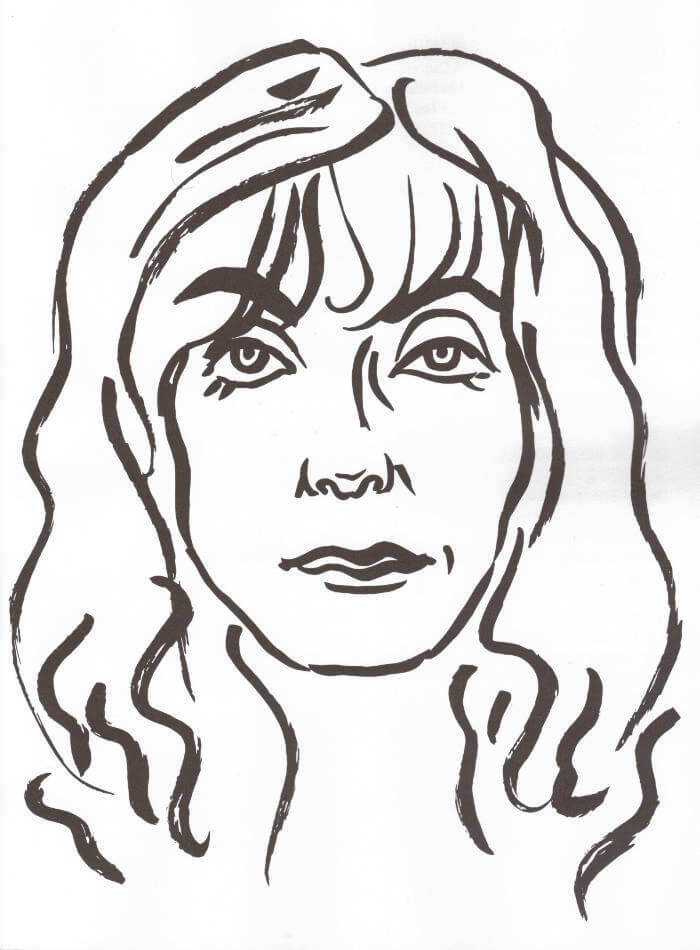
Side Magazine #02 – The Moped Rider
The second issue of the editorial discursive space for the Bergen Assembly triennial, conceived by Saâdane Afif, is dedicated to the manifold figure of the Moped Rider, which is approached differently by the seven contributors.
Side Magazine is conceived as a site of research for the fourth edition of Bergen Assembly convened by Saâdane Afif. Yasmine d'O., who has been invited as curator of the upcoming edition, will be the executive editor.
Side Magazine is dedicated to the seven characters in The Heptahedron, a play written by the French poet, essayist, and scholar Thomas Clerc in 2016. In order of apparition these characters are the Professor, the Moped Rider, the Bonimenteur, the Fortune Teller, an Acrobats, the Coalman, and the Tourist.
The second issue of Side Magazine is dedicated to the manifold figure of the Moped Rider, which is approached differently by the seven contributors. These include the film critic Lars Ole Kristiansen, who follows Nanni Moretti's vespa through Rome in the movie Caro Diario (1993), playing the role of a tourist in his own life. A reprinted chapter from Michele Bernstein's autofiction novel All the King's Horses (1960), tells the tale of late-night meanderings through Paris, and Kristian Vistrup Madsen addresses the changing intimacy between the musing figures in Caspar David Friedrich's series of paintings Two Men Contemplating the Moon (1819–c. 1830). Side Magazine's executive editor Yasmine d'O. is in conversation with curators Marcella Lista and Lou Ferrand about the place and movement of visitors in exhibition spaces.
Edited by Saâdane Afif and Yasmine d'O.
Contributions by Haci Akman, Michèle Bernstein, Lou Ferrand, Pierre-Henry Frangne, Patrick Jagoda, Yasmine d'O., Lars Ole Kristiansen, Marcella Lista, Kristian Vistrup Madsen.

Success in Failure
First monograph devoted to the work of video artist and performer Wolfgang Stoerchle (1944-1976), an artistic figure of the Californian scene in the 1970s, based on extensive research and three international exhibitions.
Wolfgang Stoerchle is a particularly notable artistic figure of the early seventies who left a certain but little advertised mark on a generation of Californian artists, especially through videotapes and performances involving his body as raw material. His short but eventful life is surrounded by rumors, and his abrupt death in 1976 may have emphasized the myth around him even more. His entire body of work was produced in eleven years, between 1965 and 1976. Forty-five years after he passed away, his name still drifts across the West Coast art world, awaiting wider recognition.
Wolfgang Stoerchle: Success in Failure is the first monograph on the artist's work, written by Alice Dusapin who has dedicated extensive research into his life and work since 2017 and organized several international exhibitions during this time (Ampersand, Lisbon; Gallery Overduin & Co, Los Angeles; Gallery Air de Paris and Museum of Contemporary Art of Rome).
The publication includes interviews with Daniel Lentz, Paul McCarthy, Matt Mullican, David Salle, Helene Winer, and an unpublished review by James Welling, alongside ephemera and documentation of Stoerchle's video works and performances, as well as rarely seen sculptures, installations, and paintings.
Edited by Alice Dusapin, with Justin Jaeckle.
Texts by Alice Dusapin and James Welling; interviews with David Salle, Helene Winer, Matt Mullican, Paul McCarthy, Daniel Lentz.
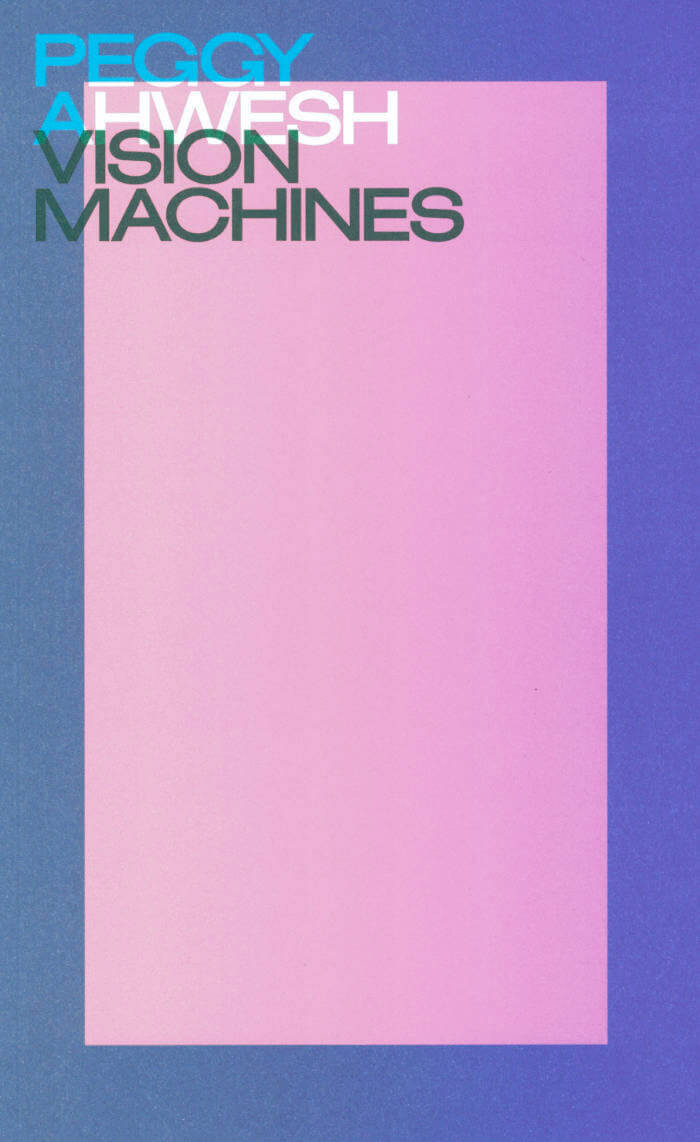
Vision Machines
Over the last four decades, American artist and filmmaker Peggy Ahwesh has forged a distinctive moving image practice in the ruins of originality and authority. monWith contributions from Erika Balsom, Elena Gorfinkel, Tendai Mutambu, John David Rhodes and Shola von Rheinold, Peggy Ahwesh: Vision Machines explores how she has extended and contested the paradigm of experimental cinema.
Since the early 1980s, Peggy Ahwesh (born 1954 in Canonsburg, Pennsylvania) has produced one of the most heterogeneous bodies of work in the field of experimental film and video. A true bricoleur, her tools include narrative and documentary styles, improvised performance and scripted dialogue, synch-sound film, found footage, digital animation, and crude Pixelvision video. The work is primarily an investigation cultural identity and the role of the subject, in various genres. Ahwesh work with subversively amateur forms, and also a discourse that yielded traditionally female-gendered themes like home and family, relationships, and confessions, which she appropriated as scenarios. Her practice insists on political and social topicality, handled with theoretical and formal rigor, with a nod to popular culture forms. She draws the audience into the world and traditions of avant-garde film and video, where, as she has remarked, "there's nothing to prove and no money to make," only the pleasures of the text.

Drive Your Plow Over the Bones of the Dead
In a remote Polish village, Janina devotes the dark winter days to studying astrology, translating the poetry of William Blake, and taking care of the summer homes of wealthy Warsaw residents. Her reputation as a crank and a recluse is amplified by her not-so-secret preference for the company of animals over humans. Then a neighbor, Big Foot, turns up dead. Soon other bodies are discovered, in increasingly strange circumstances. As suspicions mount, Janina inserts herself into the investigation, certain that she knows whodunit. If only anyone would pay her mind...
Olga Tokarczuk has won the Nobel Prize in Literature and the Man Book International Prize, among many other honors. She is the author of a dozen works of fiction, two collections of essays, and a children's book; her work has been translated into fifty languages.

Autoportrait
This publication of “Autoportrait,” translated into French for the first time, is accompanied by a foreword, and a critical and biographical structure by art historian Giovanni Zapperi, showing the singularity of Carla Lonzi's project. Made up of a series of recorded interviews, subsequently transcribed and recomposed to give birth to a particular textual montage, “Autoportrait” is an experimental attempt to reinvent art criticism thanks to a fragmentary discourse and an iconography in which reproductions of works mix with intimate images. An invaluable document on Italian art in the 1960s, “Autoportrait” is a polyphonic book, “a kind of maieutic banquet” to which Carla Lonzi invites us in order to rethink the production of discourse on art and artists.
Interviews with Carla Accardi, Getulio Alviani, Enrico Castellani, Pietro Consagra, Luciano Fabro, Lucio Fontana, Jannis Kounellis, Mario Nigro, Guilio Paolini, Pino Pascali, Mimmo Rotella, Salvatore Scarpita, Guilio Turcato, Cy Twombly...
Under the direction of Patricia Falguières, the “Lectures Maison Rouge” series has as its ambition to propose artist's texts which interrogate at the same time museology, exhibition making, and the work of certain artists themselves.
The life and work of Carla Lonzi (1931–1982) is inseparable from the cultural, political, and social history of Italy in the decades following the Second World War; she occupies a singular position, which today merits reevaluation. A reputed art critic of the 1960s artistic scene, both friend and collaborator of such figures as Carla Accardi, Luciano Fabro, Giulio Paolini, and Jannis Kounellis, she wrote “Autoportrait” in 1969, a “love letter” to the artists and to creation, but also a farewell chorus to art criticism and the art world. The following year she founded Rivolta Femminile, an active feminist collective, thus becoming the central figure of Italian feminism.
See also the English translation, published by Divided Publishing: Self-portrait, by Carla Lonzi

Spike #70 – Web3
Spike's "Web3" issue is all about the blockchain (with Holly Herndon, Rhea Myers, Charles Broskoski, Constant Dullaart, Jerry Gogosian, Ruth Catlow, María Paula Fernández, Wassim Z. Alsindi, Damien Hirst, Miao Ying, Harm van den Dorpel, Sarah Friend, Kenny Schachter, Mónica Belevan, Rafaël Rozendaal, Toby Shorin, Mark Alizart, Primavera De Filippi, Elie Ayache, Simon Denny...).
"For Spike #70, we're getting technical. Come wade with us into the OpenSea: the Web3 issue is all about the blockchain, aka the latest digital innovation that promises to either wreck or revive the art world (and world-world), depending on who you ask. Our deep-dive into this wild new frontier features everything from debates on NFT aesthetics to the feminist case for crypto; generative art as anticapitalist; scepticism at digital currency's volatility; a polemic for the blockchain as ecological salvation; and a glimpse into Web3's status behind the Great Firewall.
Decentralised, or degenerate? Genuinely liberating for creators, or just another PR stunt pulled off by capital? Any way you slice it, crypto is taking us by storm, and we'd be mistaken to look away as new possibilities and protocols crystallise. And if you're feeling hesitant, fear not: we've included a glossary walking you through all the relevant lingo, illustrated by an original selection of fresh-pressed memes."
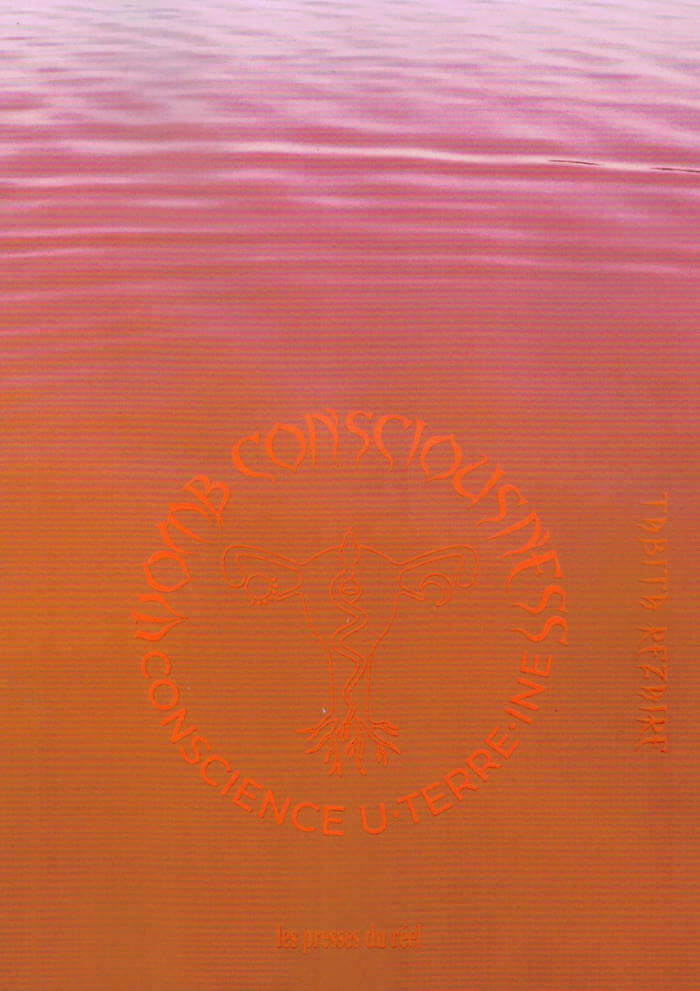
Womb Consciousness
This collective publication is a singular invitation to discover or deepen the universe of Tabita Rezaire, at the intersection of new technologies, decolonial healing, spirituality and the political history of science. Through numerous contributions from poets, theorists, artists and her friends and relatives, she invokes the wisdom of the womb: the mother womb, the earth womb, the cosmic womb, for us to receive its grace.
This book is part of a series of monographic publications co-published with the Espace multimédia Gantner devoted to women artists in connection with technology.
Tabita Rezaire (born 1989 in Paris) is an artist, yoga teacher, doula, and farmer. Her cross-dimensional practice envisions network sciences—organic, electronic and spiritual—as healing technologies. Embracing digital, corporeal and ancestral memory, she digs into scientific imaginaries and mystical realms to tackle the colonial wounds and energetic imbalances that affect the songs of our body-mind-spirits. Tabita Rezaire is based in French Guiana, where she is birthing AMAKABA (http://amakaba.org).
Rezaire's practice explores decolonial healing through the politics of technology, spirituality Navigating architectures of power—online and offline—her works tackle the pervasive matrix of coloniality . Disseminating light, her digital healing activism offers substitute readings decentering occidental authority, hoping to assist in the "dismantling [of] our white-supremacist-patriarchal-cis-hetero-globalized world screen".
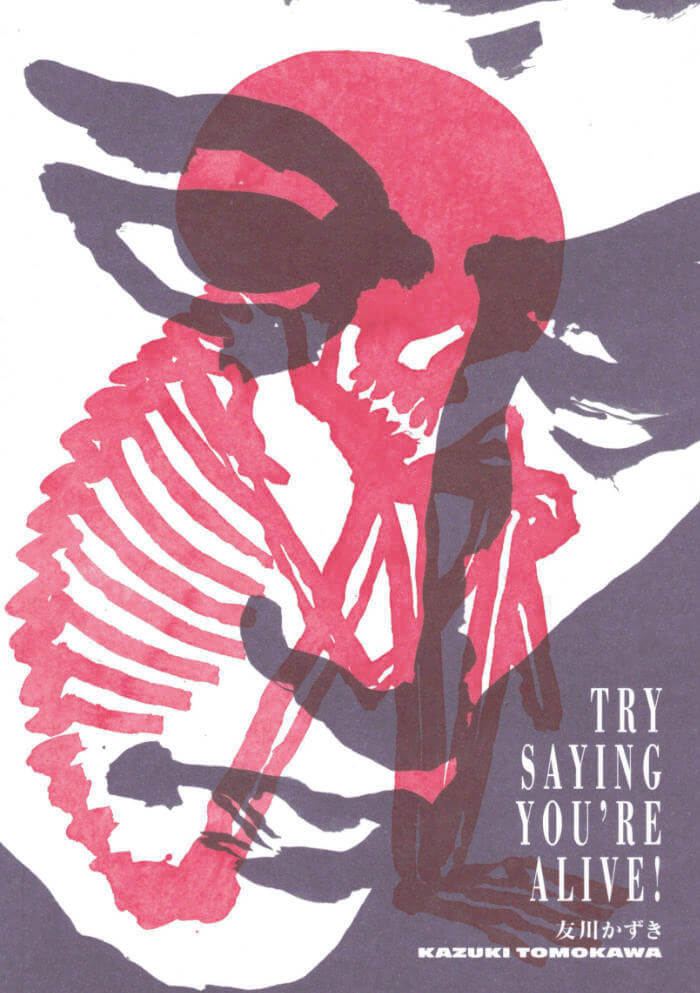
Try Saying You're Alive!
A memoir by Kawasaki-based writer and musician Kazuki Tomokawa, Try Saying You're Alive! offers a semi-fictionalized account of the vibrant Tokyo underground that he has been at the center of since the 1970s.
Recounting sixty years in the life of this "screaming philosopher." Try Saying You're Alive! traces Tomokawa's beginnings in the Akita Prefecture as a "runaway toddler," his adolescent basketball career, and his wanderings as a day laborer, gambler, painter, actor, drinker, and avant-garde folk guitarist. Anecdotes of figures such as novelist Kenji Nakagami, poet Shuji Terayama, actor Tôru Yuri, directors Takashi Miike and Nagisa Ōshima, and musicians Ryudo Uzaki and Kan Mikami animate this impassioned memoir by a legendary musician. This is the first English translation of Tomokawa's writing.
Kazuki Tomokawa (born Tenji Nozoki in 1950 in the Akita Prefecture area of northern Japan) is a prolific Japanese musician, singer-songwriter, artist and poet, one of the pioneers of acid-folk, active on the Japanese music scene since the beginning of the 1970s, companion of musicians such as Kan Mikami, Keiji Haino or Motoharu Yoshizawa. He has recorded more than thirty albums.
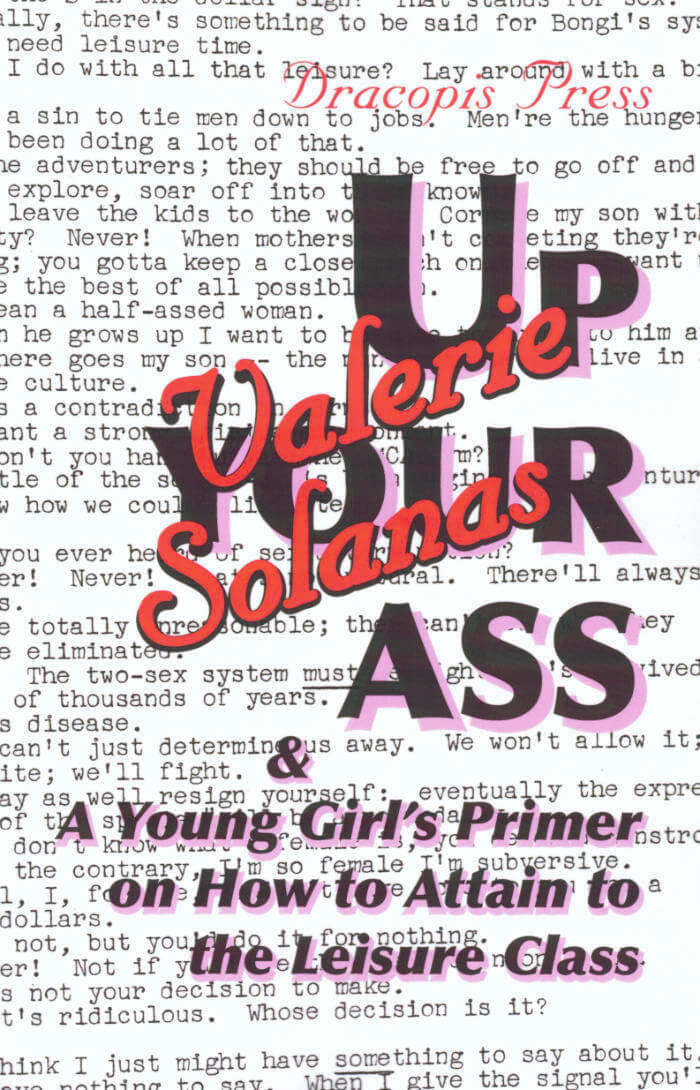
Up Your Ass; And a Young Girl's Primer on How to Attain to the Leisure Class
"I'm so female I'm subversive." Valerie Solanas.
This volume presents two rarities of Valerie Solanas. The legendary play "Up Your Ass, or, From the Cradle to the Boat, or, The Big Suck, or, Up From the Slime" (1965/1967). And the story "A Young Girl's Primer on How to Attain to the Leisure Class" (1966).
Readers of SCUM Manifesto! Behold as the literary heritage of Valerie Solanas redoubles before your eyes.
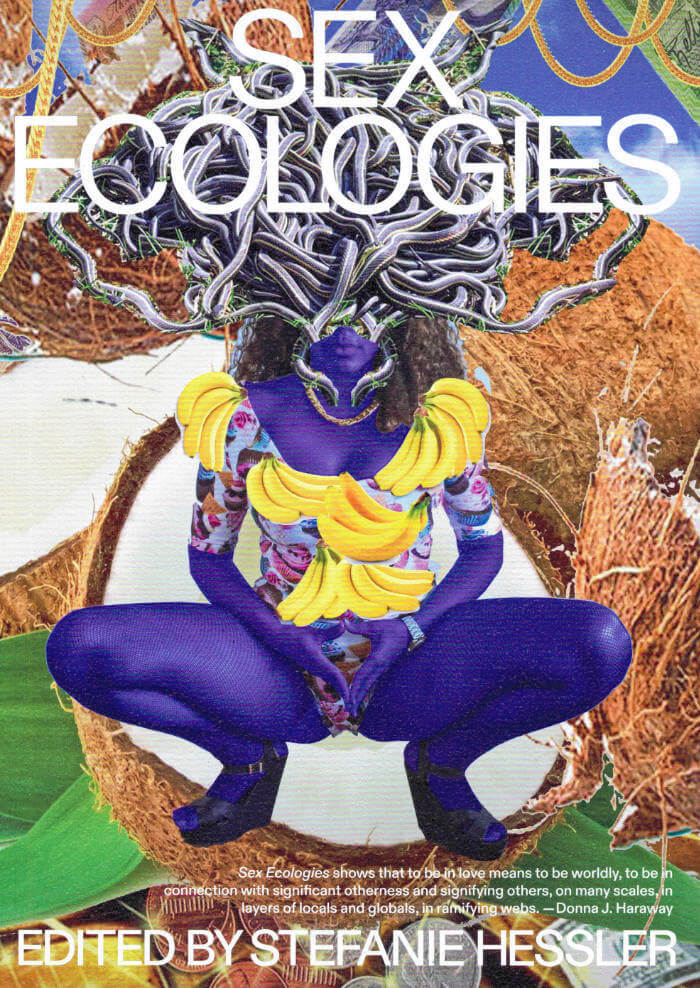
Sex Ecologies
Sex Ecologies explores pleasure, affect, and the powers of the erotic in the human and more-than-human worlds. Arguing for the positive and constructive role of sex in ecology and art practice, these texts and artistic research projects attempt nothing short of reclaiming the sexual from Western erotophobia and heteronormative narratives of nature and reproduction. The artists and writers set out to examine queer ecology through the lens of environmental humanities, investigating the fluid boundaries between bodies (both human and nonhuman), between binary conceptions of nature as separate from culture, and between disciplines.
In newly commissioned texts from such writers as Mel Y. Chen and Jack Halberstam and a selection of influential essays—including an annotated version of Audre Lorde's “The Uses of the Erotic: The Erotic as Power”—as well as images and sketches from works in progress by a diverse group of artists, Sex Ecologiescombines insights from the fields of art, environmental humanities, ecofeminism, gender studies, science, technology, political science, and indigenous studies.
Sex Ecologies, which accompanies an exhibition of the same name at Kunsthall Trondheim, emerges from an arts-driven research project collaboratively developed between the art center and the Seed Box environmental humanities collaboratory. Conceived not as a result but as a seed arising from this transdisciplinary fertilization, the volume presents a case for the role of sex in environmental and social justice.
Contributors:
Katja Aglert,Tarsh Bates, adrienne maree brown, Mel Y. Chen, Pauline Doutreluingne, Léuli Eshrāghi, Jes Fan, Ibrahim Fazlic, Jack Halberstam, niilas helander, Stefanie Hessler, Jenny Hval, Anne Duk Hee Jordan, Jessie Kleemann, Audre Lorde, Nina Lykke, Montserrat Madariaga-Caro, Camila Marambio, Astrida Neimanis, Pedro Neves Marques, Okwui Okpokwasili, Marie Helene Pereira, Margrethe Pettersen, Laure Prouvost, Filipa Ramos, Catriona Sandilands, Sami Schalk, Serubiri Moses, Leanne Betasamosake Simpson, Annie Sprinkle and Beth Stephens, Kim TallBear, Anna Tje, Alberta Whittle, Victoria Wibeck, Elvia Wilk
Copublished with Kunsthall Trondheim (Norway) and the Seed Box (Sweden)
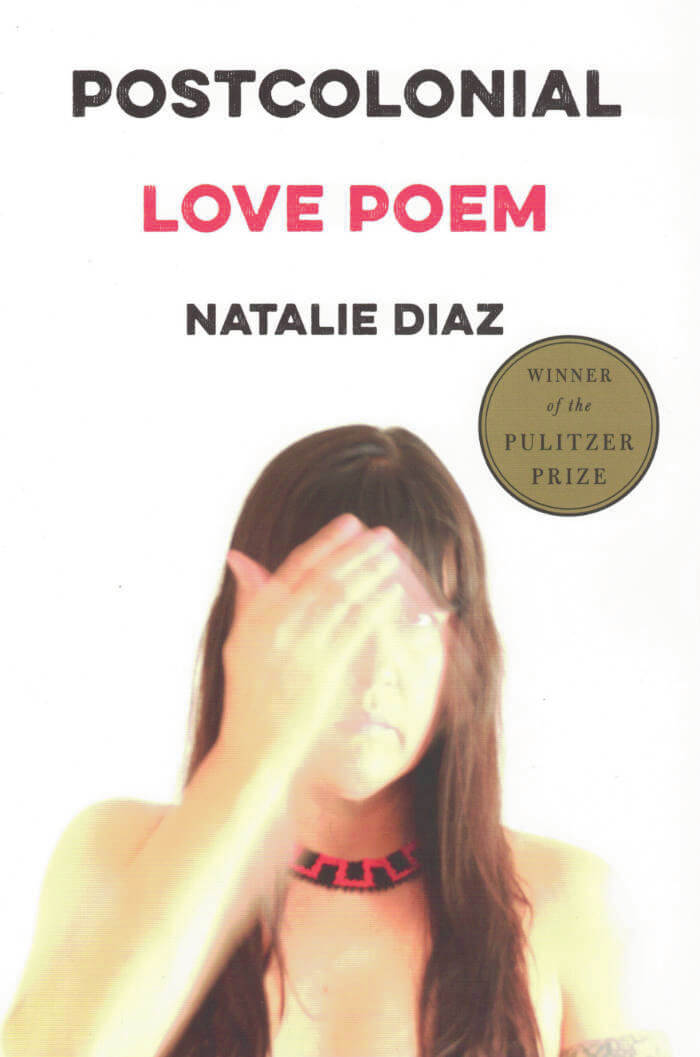
Postcolonial Love Poem
Postcolonial Love Poem is an anthem of desire against erasure. Natalie Diaz's brilliant second collection demands that every body carried in its pages—bodies of language, land, rivers, suffering brothers, enemies, and lovers—be touched and held as beloveds. Through these poems, the wounds inflicted by America onto an indigenous people are allowed to bloom pleasure and tenderness: "Let me call my anxiety, desire, then. / Let me call it, a garden." In this new lyrical landscape, the bodies of indigenous, Latinx, black, and brown women are simultaneously the body politic and the body ecstatic. In claiming this autonomy of desire, language is pushed to its dark edges, the astonishing dunefields and forests where pleasure and love are both grief and joy, violence and sensuality.
Diaz defies the conditions from which she writes, a nation whose creation predicated the diminishment and ultimate erasure of bodies like hers and the people she loves: "I am doing my best to not become a museum / of myself. I am doing my best to breathe in and out. // I am begging: Let me be lonely but not invisible." Postcolonial Love Poem unravels notions of American goodness and creates something more powerful than hope—in it, a future is built, future being a matrix of the choices we make now, and in these poems, Diaz chooses love.
WINNER OF THE 2021 PULITZER PRIZE IN POETRY
FINALIST FOR THE 2020 NATIONAL BOOK AWARD FOR POETRY

Just Us: An American Conversation
In Just Us, Claudia Rankine invites us into a necessary conversation about Whiteness in America. What would it take for us to breach the silence, guilt, and violence that arise from addressing Whiteness for what it is? What are the consequences if we keep avoiding this conversation? What might it look like if we step into it? "I learned early that being right pales next to staying in the room," she writes.
This brilliant assembly of essays, poems, documents, and images disrupts the false comfort of our culture's liminal and private spaces—the airport, the theater, the dinner party, the voting booth—where neutrality and politeness deflect true engagement in our shared problems. Rankine makes unprecedented art out of the actual voices and rebuttals of others: White men responding to, and with, their White male privilege; a friend clarifying her unexpected behavior at a play; and women on the street expressing the political currency of dyeing their hair blond, all running alongside fact-checked notes and commentary that complement Rankine's own text, complicating notions of authority and who gets the last word. Funny, vulnerable, and prescient, Just Us is Rankine's most intimate and urgent book, a crucial call to challenge our vexed reality.
Claudia Rankine is a poet, an essayist, and a playwright. Just Us completes her groundbreaking trilogy, following Don't Let Me Be Lonely and Citizen. She is a MacArthur Fellow and teaches at New York University.
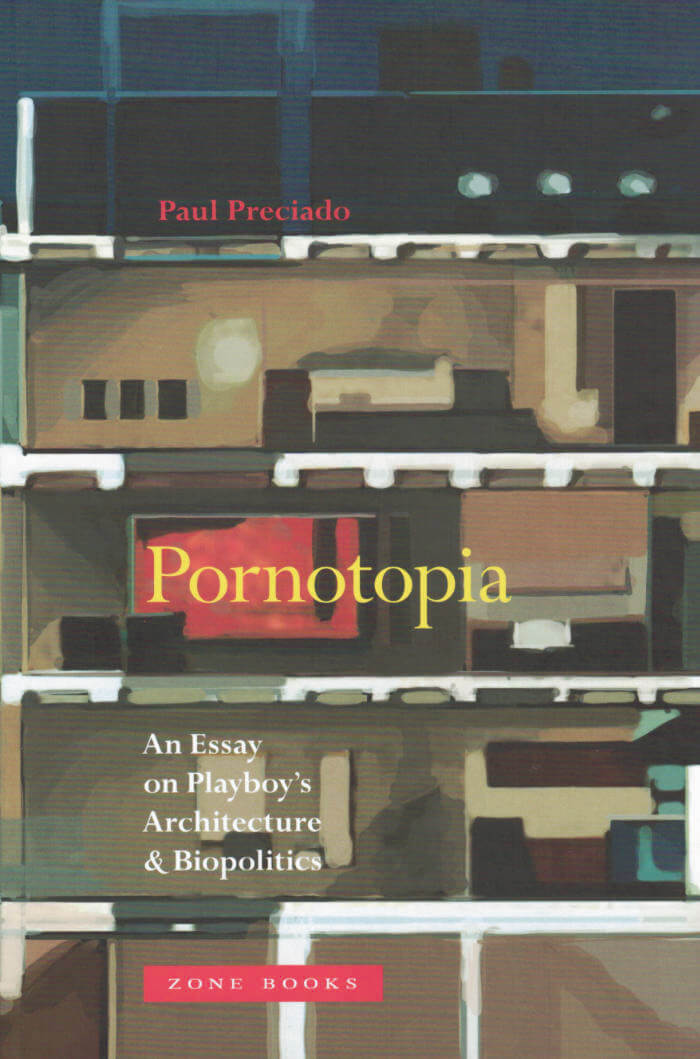
Pornotopia
Published for the first time in 1953, Playboy was not only the first pornographic popular magazine in America; it also came to embody an entirely new lifestyle through the construction of a series of utopian multimedia spaces — from the Playboy Mansion and fictional Playboy's Penthouse of 1959 to the Playboy Clubs and hotels appearing around the world in the 1960s. Simultaneously, the invention of the contraceptive pill provided access to a biochemical technique that separated (hetero) sexuality and reproduction.
Addressing these concurrent cultural shifts, Paul Preciado investigates the strategic relationships between space, gender, and sexuality in popular sites related to the production and consumption of pornography that have tended to reside at the margins of traditional histories of architecture: bachelor pads, multimedia rotating beds, and design objects, among others.
Combining historical perspectives with contemporary critical theory, gender and queer theory, porn studies, the history of technology, and a range of primary transdisciplinary sources — treatises on sexuality, medical and pharmaceutical handbooks, architecture journals, erotic magazines, building manuals, and novels — Pornotopia explores the use of architecture as a biopolitical technique for governing sexual relations and the production of gender in the postwar United States.